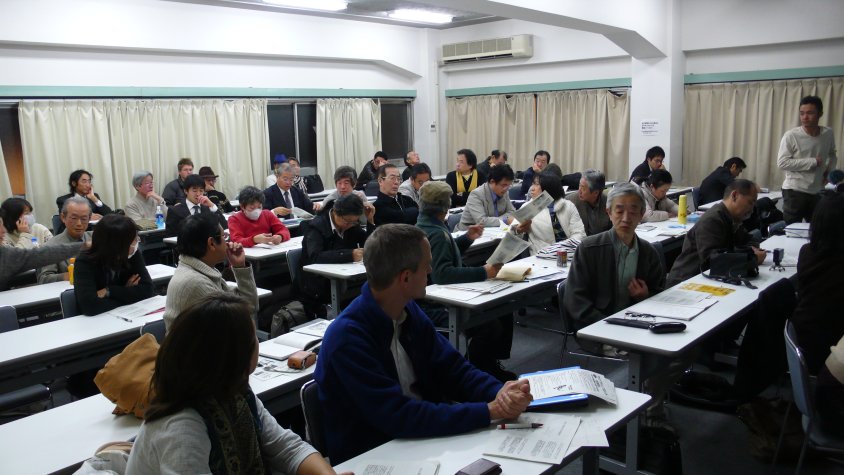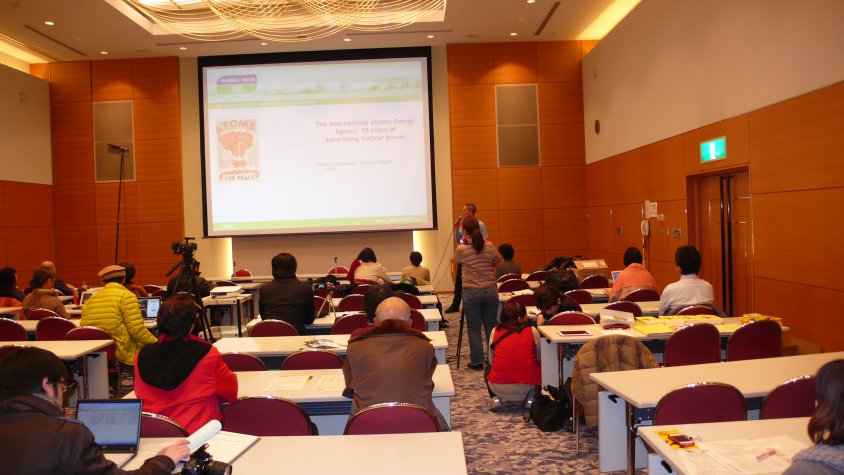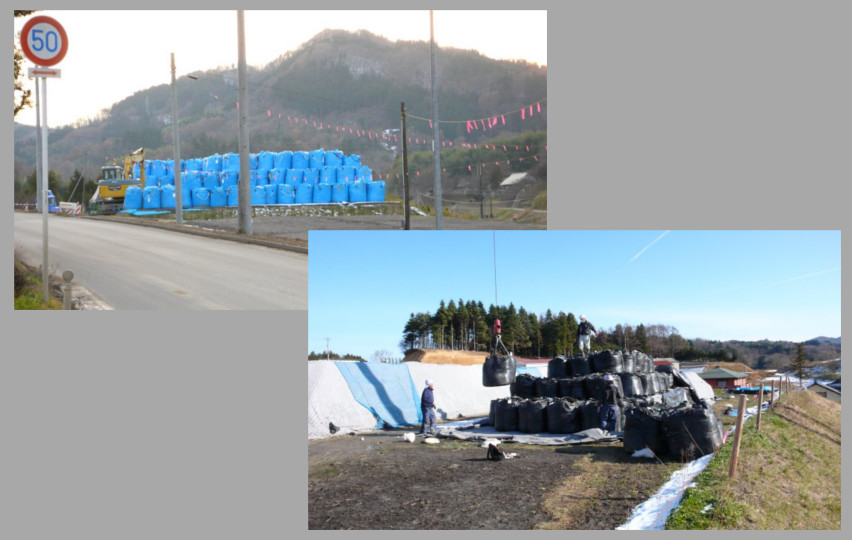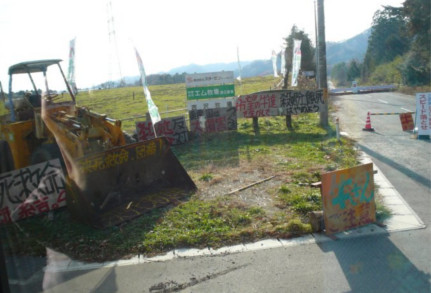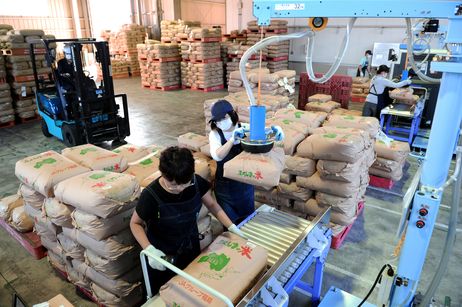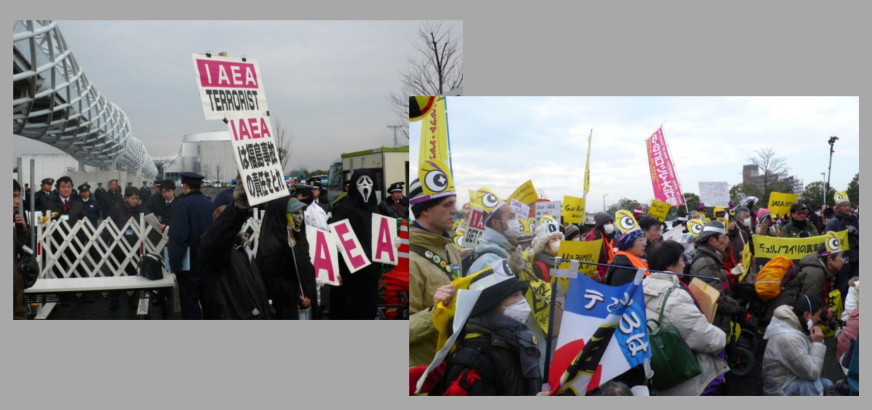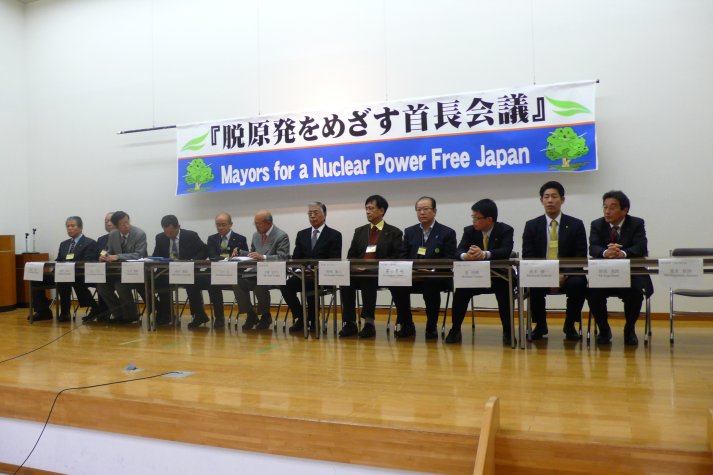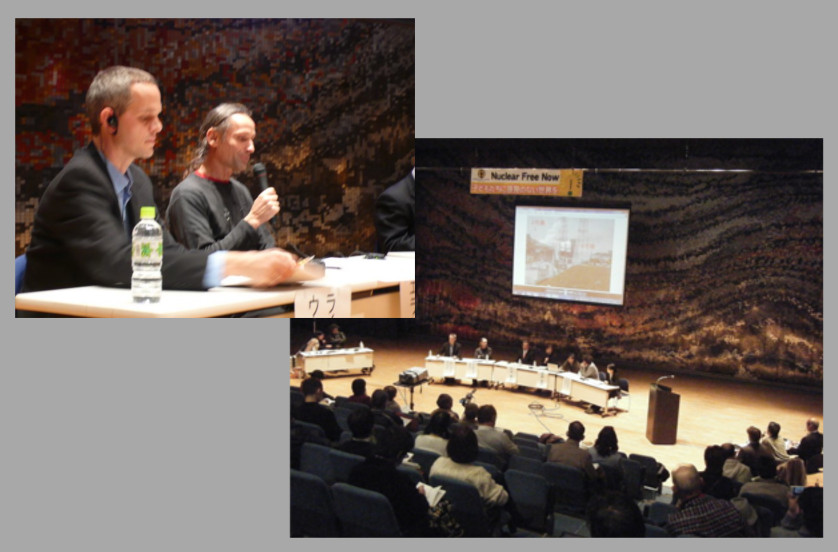An alternative conference was organised by the ‘Nuclear Free Now’ collective, in Koriyama, a town situated 55km from the Fukushima power plant, from 12th to 17th December 2012, in response to the ministerial meeting on nuclear safety organised for the same dates in the same town by the Japanese government and the IAEA.
As the organisers of the alternative forum wanted a member of IndependentWHO to make a presentation on the WHO/IAEA Agreement and talk about our organisation’s activities, I took part in various events that ‘Nuclear Free Now’ had organised.
http://www.dailymotion.com/video/xz3vtc
~
In Tokyo, a preliminary meeting was organised for 12th December by ‘Friends of the Earth – Japan’, with presentations by two Japanese associations about the situation in Fukushima, another on the IAEA by Reinhard Uhrig of the Austrian organisation ‘Global 2000’ and also with a contribution from me.
~
On Thursday 13th December, the same presentations were given, this time in Fukushima. There was a particularly notable moment when, in the video that I was presenting on the Vigil outside the Ministry of Health in Paris, some the inhabitants of Fukushima recognised one of their own people, who now resides in France.
~
On Friday 14th December, together with the other Europeans who had come for the alternative forum, we went to the most contaminated zone for the day. Throughout the journey we saw workers pressure-washing the roofs of houses, and various areas, gardens and fields, where the topsoil had been completely removed. It was contaminated, and was being stored in huge sacks.
We begin by visiting Iitate, an evacuated village where, apart from the workers involved in decontamination, there is not a living soul to be seen. Nothing special in this town, nothing to see, nothing to feel, only the bip-bip of the Geiger counter. It’s astonishing that the radioactivity is distributed unevenly, in ‘leopard spots’, that you can’t see it, that you could forget it was there if you wanted, until the health consequences come along to remind you. In Iitate, the bags of earth are stacked up, waiting to be sent away, but it seems no-one has the slightest idea where they can go. The issue of storing the ‘waste’ is already posing a serious problem, and with the amounts continuing to increase as the decontamination goes on, the situation is getting worse. And for the moment, those places earmarked for receiving the waste are making it clear … that they definitely do not want it. So, in some of the fields, it has been decided to dilute the contamination on the spot, by digging up the soil and mixing it with the layer underneath, meaning that from now on any cultivation is impossible.
After that we move on to Minamisouma. The coast is nearby and the devastation caused by the tsunami is still clearly visible. You get a much stronger sense of the absolutely incredible force of such a cataclysm, and … the arrogance of human beings to think that their nuclear power plants could withstand it!
We meet Father Kariura, a priest who has come from Nagoya to help the victims, and who knows what radiation means since he was born in Nagasaki. Previously, he has done a lot to help the victims of mercury pollution released by the petrochemical factory at Minamata in the south-west of Japan. In Minamisouma, our counters are showing 2 to 3 microSievert/h at the place we are, which makes 16 to 26 millisieverts per year. The city is divided into 4 zones: one where it is now impossible to live for very long; one where for the moment it is forbidden to live at all; one where the ban will be shortly lifted; and one where it is still possible to live. This division into zones has raised a lot of questions and created divisions among the residents who no longer know what to believe or what to do. Father Kariura is clearly very much on his own, and has to deal with the multitude of demands from that section of the population who have not yet fled, and who are relying on him.
In Oguni, we meet Mr Kanno, an architect. He explains to us how this catastrophe has literary blown apart the community that had previously been very tightly-knit. In this zone, there are only 128 families named in the list of “recommended evacuations”, and that is without them being told the criteria upon which these evacuations are decided.
Depending on whether the evacuations are decided by the government or by the people themselves, there either will or will not be compensation. Needless to say, the government does all it can to ensure that it pays out as little as possible. There is no shortage of ideas or strategies for denying compensation. There is also the problem of a lack of coordination between the different agents who are involved in managing this disaster. Thus, personnel from the Ministry of Health will decide to decontaminate one area, while those from the Ministry of the Environment will decide to decontaminate another, without the people being given any explanation for the choice of either one or the other.
Inside this zone, measurements have been taken on the rice plants. It was found that there was no linear correlation between the ambient level of radioactivity in the soil and the dose that was subsequently found in the plant. Variations have been observed and are due to many factors, such as the type of soil, its calcium content for example ….a whole range of factors which make it very difficult to decide whether to cultivate or not.
The way that measurements are taken and the way in which the disaster is dealt with, are largely dependant upon the Mayor. In those communes where the Mayor does very little and doesn’t work together with the population, everyone is forced to get by on their own as well as they can in terms of measuring levels of radiation, health examinations, and interpreting the results, as well as working out what needs to be done.
In this region of Oguni, the rural population lives very simply, and the use of the internet is not available for some. Therefore, without this means of getting information, in the face of the silence of the authorities and in the face of the contradictory information that is given out, or the measures that are taken without any obvious logic, they feel betrayed, abandoned and lost. These are the sentiments that are generally expressed when you meet one of the victims of Fukushima.
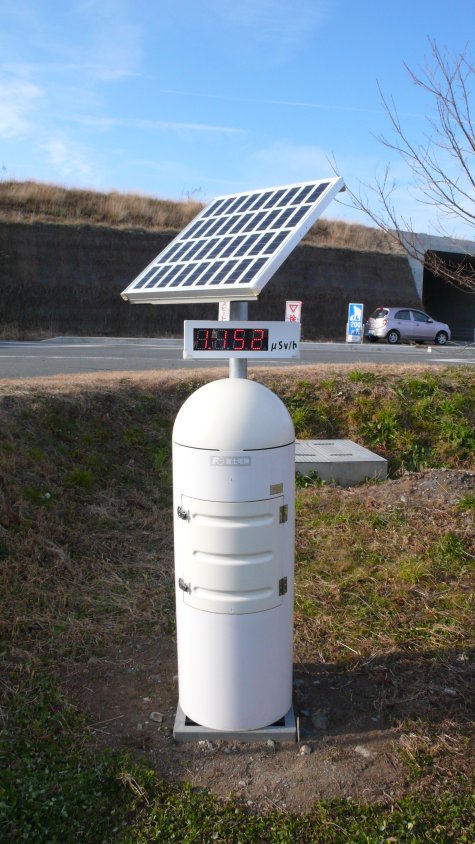 In the course of the day, we stopped to look at a number of radiation counters that had been set up in various places, which should make it possible for the people to see the levels of contamination. However, as we had already been told, we could see that there was a difference between the reading on the ‘official’ counter and that on our own which was placed close by, in the sense that the reading on the official counter was lower. In order to avoid registering too high a reading, the area around the counter is generally kept clean and free from contamination.
In the course of the day, we stopped to look at a number of radiation counters that had been set up in various places, which should make it possible for the people to see the levels of contamination. However, as we had already been told, we could see that there was a difference between the reading on the ‘official’ counter and that on our own which was placed close by, in the sense that the reading on the official counter was lower. In order to avoid registering too high a reading, the area around the counter is generally kept clean and free from contamination.
Other techniques are also used, such as placing a metal plate under the counter. Straightaway, the reading no longer reflects the true level of contamination in the area where people are living. Concealment, lies: the nuclear industry looks after its own interests.
~
On Saturday 15th December a demonstration was heldoutside ‘Big Palette’, the conference centre in Koriyama. The IAEA were holding a three-day ministerial safety conference there, bringing together several hundred participants from all the organisations that make up the nuclear lobby, and ministers from across the world. Astonishingly, in this city which is at the very heart of the disaster, there were only a few hundred of us demonstrating.
‘Denial’ is strong among the local population, the desire to forget dominates, but the suffering caused by the consequences of the disaster and the possibility that it is still getting worse is, it seems, present in everyone’s mind. A very striking moment during the demonstration: the IAEA representative came to listen to the speeches given by the representatives of various victims’-organisations. Visibly moved by the suffering, she nevertheless did not cross the barrier that separated us from her in order to mix with the victims. Maybe after ten disasters ….!
~
On the Saturday afternoon, still in Koriyama, there was a Conference of Mayors who are against Nuclear power (80 Mayors from the Kukushima region and elsewhere belong to this group).
They too say they feel abandoned, without advice from the government, having to learn what is happening by watching television.
During this conference, the ground began to shake, and then the walls and the ceiling: 5.3 on the Richter scale. We were 60km away from the ruined power plant, and the pool of Reactor No.4, which another earthquake could well bring crashing down. The person next to me, in spite of being well used to the constant tremors in this country, grows pale, as of course so do I.
At Big Palette, the IAEA delegates were equally exposed to this shock. Not enough, however, to shake their beliefs, as I would see for myself the following day.
~
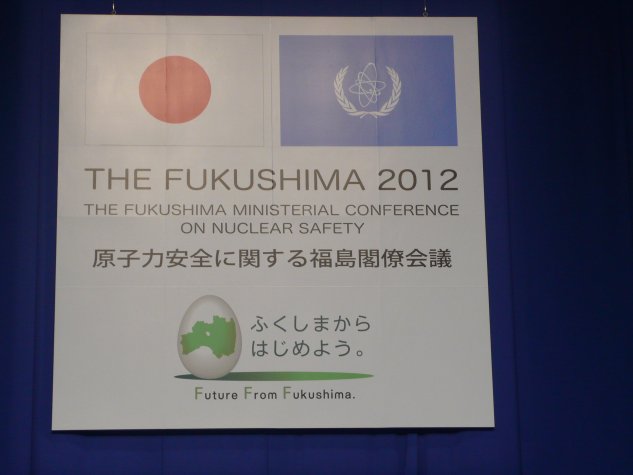 As the organisers of ‘Nuclear Free Now’ had permission for ‘observers’ to attend the IAEA conference, I went along there on the Sunday morning. The theme was ‘Lessons learnt from the accident at Fukushima Power Plant’. It was interesting to see that, unsurprisingly, there was nothing from all these people about the wonders of nuclear power. In brief, the speakers expressed satisfaction with the work that was being done, things that had been achieved, but at the same time recognised that even more needed to be done to ensure that an accident such as the one at Fukushima should not happen again. The previous day, at the opening ceremony, Mycle Schneider, who was also there as an observer, told us that he felt it was like being back in 1986 all over again: quite simply the accident had not been as bad as might have been feared. Minimise, minimise as much as possible, such is the way of the nuclear lobby.
As the organisers of ‘Nuclear Free Now’ had permission for ‘observers’ to attend the IAEA conference, I went along there on the Sunday morning. The theme was ‘Lessons learnt from the accident at Fukushima Power Plant’. It was interesting to see that, unsurprisingly, there was nothing from all these people about the wonders of nuclear power. In brief, the speakers expressed satisfaction with the work that was being done, things that had been achieved, but at the same time recognised that even more needed to be done to ensure that an accident such as the one at Fukushima should not happen again. The previous day, at the opening ceremony, Mycle Schneider, who was also there as an observer, told us that he felt it was like being back in 1986 all over again: quite simply the accident had not been as bad as might have been feared. Minimise, minimise as much as possible, such is the way of the nuclear lobby.
~
On the Sunday afternoon, it was time for the People’s Conference, beginning with a presentation on the IAEA by Reinhard Uhrig of ‘Global 2000’, followed by my own contribution on the WHO/IAEA Agreement and the activities of IndependentWHO. Representatives from two Japanese associations and a former Japanese ambassador then joined us for a discussion with the audience.
~
On Monday 17th December, we returned to the IAEA conference, where the theme was ‘Protection of People and the Environment from radioactive contamination’.
In the morning, Maria Neira, the director of WHO’s Department of Public Health and Environment, gave a presentation on the role of WHO and the work that has been done. A presentation given at a steady pace, with a long list of the collaborations that WHO are involved in and the the way they have responded from the very beginning of the disaster. In other words, a WHO actively and effectively involved. And of course we hear all about the inevitable psychological problems affecting the populations, and in particular radiophobia which needs to be treated, among other treatments (!), by making available appropriate information. The preliminary results from a study carried out by the Medical University in the Prefectuire of Fukushima concerning diseases of the thyroid among children were not mentioned! Unfortunately the study can’t have arrived at WHO in time, or else was accidentally lost among all the Spam. So it was a report of satisfactory progress, which was then confirmed by Dr Weiss of UNSCEAR. He assured us that not one of the workers who died in the year following the accident had died due to radiation, which had in fact had no effect on workers or the population. Really?!
It is interesting to note that, on matters of health, certain problems or questions weren’t necessarily denied but were all met by the following hypocritical response: The research has not so far made it possible to draw definite conclusions – or to identify significant consequences – We must continue to work on these issues.
They do not necessarily deny the evidence any more but as far as possible they put off the moment when they will be forced to draw the inevitable conclusions.
Communication is a theme that recurred in all the presentations, but one of the speakers in particular stressed the need not to have public discussions on matters upon which they could not agree among themselves. A common message, without dissent, is more reassuring for the people, is what is envisaged by the nuclear lobby, and it succeeds because that is what is on display at a gathering of this kind.
~
On Monday afternoon, a press conference was organised to report back on the alternative forum. I took the opportunity to express my pleasure at being there with the Japanese people, but also my enormous sadness that my being there was the result of such a terrible tragedy.
I also said how impressed I was by the number of organisations that the people had created in order to work on all the different problems that this tragedy had created, but I also underlined the necessity of them working together, in solidarity, with determination in order to give a real impetus to their resistance which clearly still needs unifying.
~
After this press conference, we returned to Tokyo to rejoin the 37 million inhabitants of the most populated megalopolis in the world. At over 70k the urban concentration is absolutely incredible, and for that reason, the feeling is frightening. If the earth were to shake again, enough to destroy Reactor No.4, and the wind were to be blowing in this direction, it would be impossible for these people to escape. Terrifying, absolutely terrifying.
Christophe Elain – Tokyo – 20 December 2012
